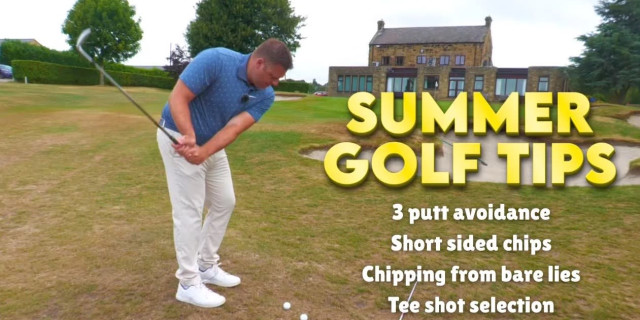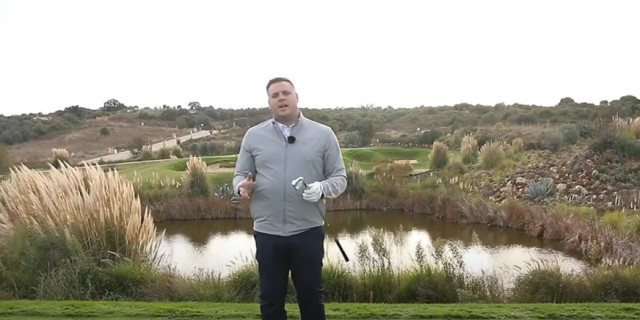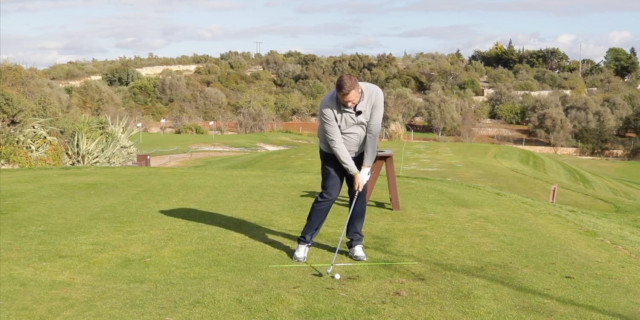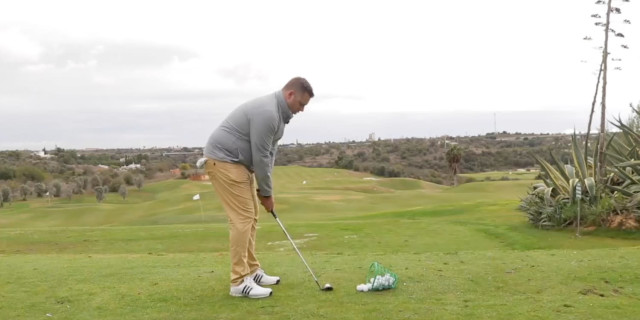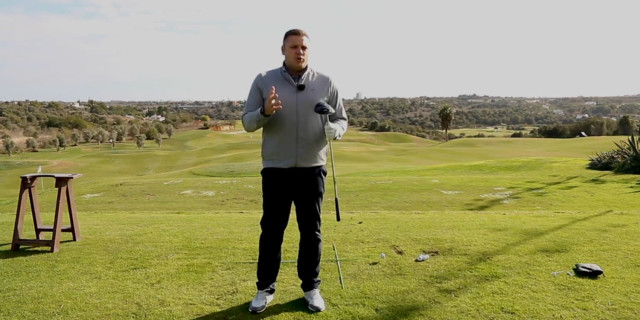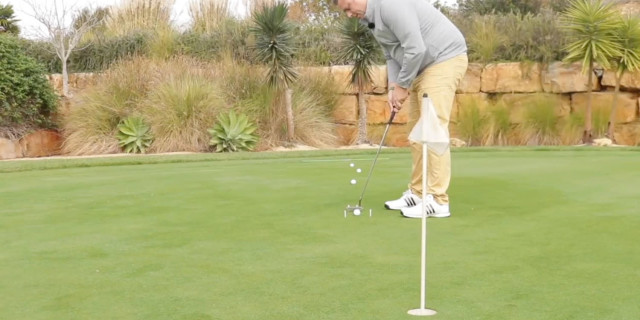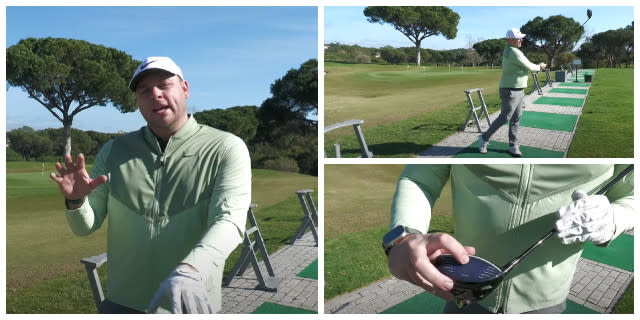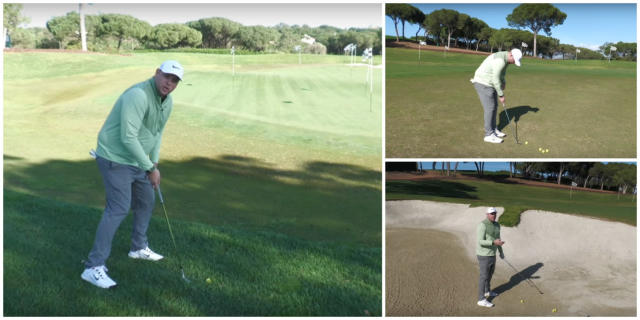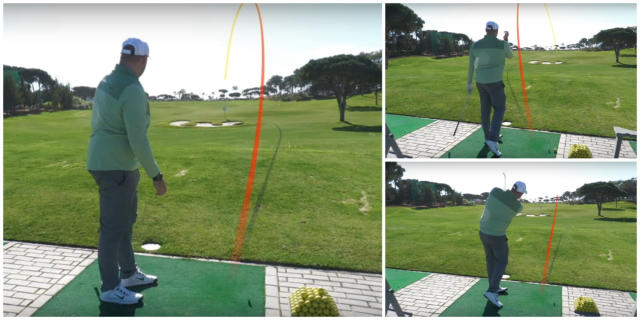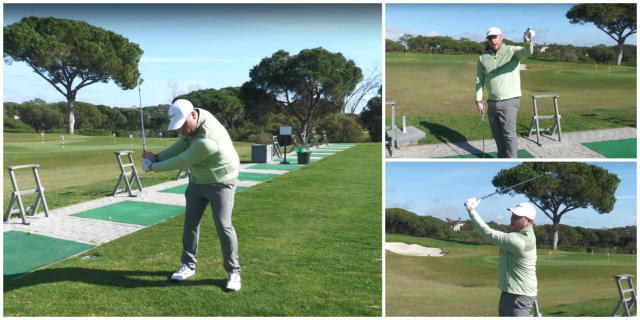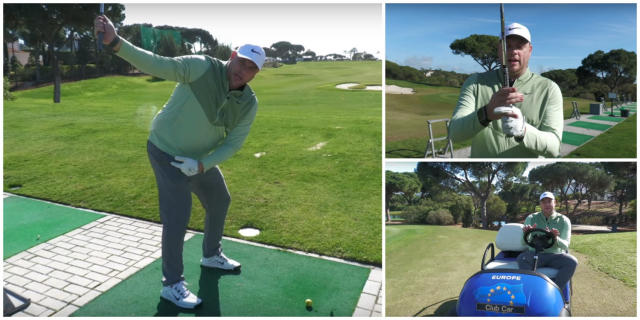Causing Your Ball to Move
Barry is author of the book, ‘999 Updated Questions on the Rules of Golf 2012 - 2015’ and writes a regular blog of miscellaneous content on the rules of Golf at www.barryrhodes.com
In most circumstances, when a golfer causes their ball in play to move, whether accidentally or purposely, in either stroke play or match play, there is a penalty of one stroke under Rule 18-2 and the ball has to be replaced. This includes a player;
- Treading on or kicking their ball while searching for it anywhere, except when it is covered by sand.
- Striking their ball as they make a practice stroke other than on the teeing ground.
- Dropping a glove, towel, club or other equipment on their ball.
The one stroke penalty also applies when a player touches their ball when they are not entitled to under the Rules. Examples of this are when a player;
- Touches their ball when it is lying on the apron (fringe) and not on the putting green.
- Touches a ball to identify it without following the correct procedure. In my opinion this is one of the commonest breaches of the Rules of Golf. (Click here to view my blog on this subject).
- Picks up their ball in match play when they think that the hole has been won or lost and it has not.
- Picks up a ball in a strokes competition in which they must hole out (or be disqualified), e.g. mistakenly thinking it was Stableford scoring and that no points could be scored.
- Picks up their ball thinking that relief was available when it was not (e.g. from a tractor rut).
- Picks up their ball that has been moved by the wind instead of playing it from where it came to rest.
However, there are seven important exceptions listed in Rule 18-2a, where no penalty is incurred when a player causes their ball in play to be moved. They are;
- In searching for a ball covered by sand, in the replacement of loose impediments moved in a hazard while finding or identifying a ball, in probing for a ball lying in water in a water hazard or in searching for a ball in an obstruction or an abnormal ground condition – Rule 12-1.
- In repairing a hole plug or ball mark – Rule 16-1c .
- In measuring – Rule 18-6 .
- In lifting a ball under a Rule – Rule 20-1 .
- In placing or replacing a ball under a Rule – Rule 20-3a.
- In removing a loose impediment on the putting green – Rule 23-1.
- In removing movable obstructions – Rule 24-1.
Remember, that the provisions and exceptions to Rule 18-2a also apply when the player’s caddie, or partner in a four-ball or foursomes, causes the player’s ball to move.
There is an important amendment to Rule 18 that was introduced from 1st January 2012. Rule 18-2b states that if a player’s ball in play moves after they have addressed it (other than as a result of a stroke) the player is deemed to have moved their ball and incurs a penalty of one stroke. The ball must be replaced, unless the movement of the ball occurs after the player has begun the stroke or the backward movement of the club for the stroke and the stroke is made. However, if it is known or virtually certain that the player did not cause their ball to move, Rule 18-2b does not apply. So, if a player’s ball has definitely been moved by the wind, or some other element (earthquake!) there is no penalty, even if the player had completed their address.
It should also be noted that there is a new definition of ‘address’; “A player has addressed the ball when he has grounded his club immediately in front of or immediately behind the ball, whether or not he has taken his stance.” The removal of stance as a requirement for addressing the ball also became effective from 1st January 2012.
Finally, when has a ball moved under the Rules? The Definition of ‘Moved’ clarifies that a ball is deemed to have moved if it leaves its position and comes to rest in any other place. So, an oscillating ball that does not move from its spot has not moved.
Good golfing,
Related Content:
Article from Barry Rhodes author of the book, ‘999 Questions on the Rules of Golf 2016’
Barry is author of the book, ‘999 More Questions on the Rules of Golf 2016’ and writes a regular blog of miscellaneous content on the rules of Golf at www.barryrhodes.com
Related Video
Barry Rhodes
Barry is author of the book, '999 Updated Questions on the Rules of Golf 2012 - 2015' and writes a regular blog of miscellaneous content on the rules of Golf at www.barryrhodes.com
Latest Articles- Rules: Before Commencing a Round
- Are Rules Made to be Broken?
- Golfing in Bad Weather - Rules to be aware of

